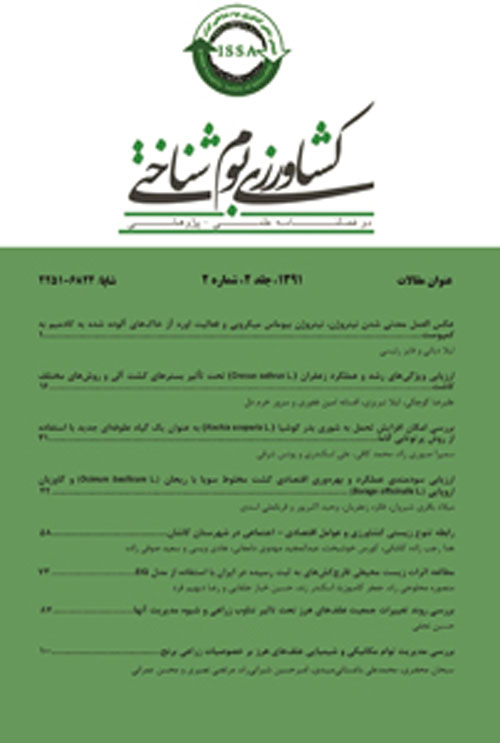The effect of additive intercropping of maize and sorghum with legumes on yield, forage quality and weed dry weight
Author(s):
Abstract:
Introduction
Intercropping has many advantages including improved soil conditions (Chen et al., 2004), increased resources and better weed control (Banik et al., 2006). Due to their positive effect on forage quality, intercropping of cultures has an important role in farming systems. Furthermore, intercropping improves absorption of solar radiation, increases the activity of soil microorganisms and contributes to better weed- and pest-resistant conditions (Karadage, 2004). The goal of this research is to investigate intercropping of maize and sorghum with legumes, such as mung beans, cowpeas and clover, in order to evaluate the benefits. The benefits should include increased yield, improved quality forage (higher protein levels), and better weed control. Intercropping should best suit the climatic conditions of the region and improve agricultural practices.Materials And Methods
In order to investigate the effect of additive intercropping of maize and sorghum with legumes on qualitative and quantitative forage and weed growth, a field experiment was carried out over two years, in the 2011-12 growing seasons in the village of Mafin-Abad, in the Eslamshahr region of Tehran Province. Maize and sorghum monoculture and their intercropping with three different legumes (mung beans, cowpeas and berseem clover) in different additive intercropping systems were compared in a randomized complete block design (RCBD) with three replications. The traits evaluated in this study include yield, forage dry matter, protein, index against ground, and economic advantages.Results And Discussion
The results showed that intercropping increased forage dry matter and crude protein. Intercropping also significantly decreased weed dry weight. In all intercropping treatments, LER was above 1, indicating yield advantages for intercropping. Maize and cowpeas in the 100% density treatment showed the best results over both years and produced the highest dry forage yield, LER and CP and the least amount of weed dry weight. Based on the results of this experiment, it could be concluded that maize and sorghum-legume intercropping could substantially increase forage quality and quantity. These intercrops can be recommended to replace monoculture systems. Maize and sorghum-cowpea additive intercropping could be highly recommended because of higher forage quality and quantity with fewer side effects on the environment.Conclusion
The results showed that intercropping could be used to increase yield, improve forage quality and weed control. Intercropping cultures also indicated that LER was more than 1 and led to a higher economic profit in comparison with a monoculture. This can be a suggestion for farmers to use intercropping in this recommended form. In the intercropping of maize and sorghum and cowpea, particularly with a density of 100%, cowpea clearly manifests itself. Therefore, intercropping can be recommended to farmers as a way to boost performance, revenue, forage quality (protein) and control weeds.Keywords:
Language:
Persian
Published:
Journal of Agroecology, Volume:7 Issue: 1, 2017
Page:
17
https://magiran.com/p1733793


